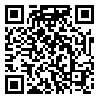BibTeX | RIS | EndNote | Medlars | ProCite | Reference Manager | RefWorks
Send citation to:
URL: http://ijn.iums.ac.ir/article-1-737-en.html
Background and Aim: Falls are one of the major health problems among older adults, affecting the quality of life and leads to serious problems in societies. The purpose of this study was to investigate the prevalence of falling down among older people living in Khoramabad and determine related risk factors.
Material and Method: In this descriptive cross-sectional study, 400 older adults aged 60 and older , living in Khoramabad participated. Sampling was done by multi-stage clustering method. The semi-structured questionnaire was applied for data collection and was completed by the co-researchers. Data was analyzed using SPSS version 15.0, using descriptive statistics, Chi- square test, Fisher's exact test and Mann-Whitney test.
Results: The samples compromised of 52.5% male and the rest of them were female, their level of education was 4% diploma and higer, 3% guidence school, 17% primary school and rest of them were illiterate. The most of them aged 60-64years (29%) and the least of them were older than of 85 years (6%). The prevalence of falling down was 24.8%. The findings suggested a statistically significant relationship of the usage of assistance devices the way of bathing chronic conditions such as arthritis, stroke, visual impairments, disorientation, depression, chronic obstructive pulmonary disease, and incontinency (urinary and fecal) with falling down, but there wasn't a statistically significant relationship of taking drugs separately, exercise, opium misuse with falling down.
Conclusion: The findings showed that one of four older people experienced falling down during one year period. Assessment of factors related to falling down needs multidisciplinary team collaboration. Health care system should organize a special system for falling down and fractures, also providing suitable environmental modifications with physical and mental status, using suitable assistance devices, and determining older people at risk, providing family/patient education about strategies of preventing falls.
Received: 2010/03/17 | Accepted: 2014/08/25 | Published: 2014/08/25
| Rights and permissions | |
 |
This work is licensed under a Creative Commons Attribution-NonCommercial 4.0 International License. |




